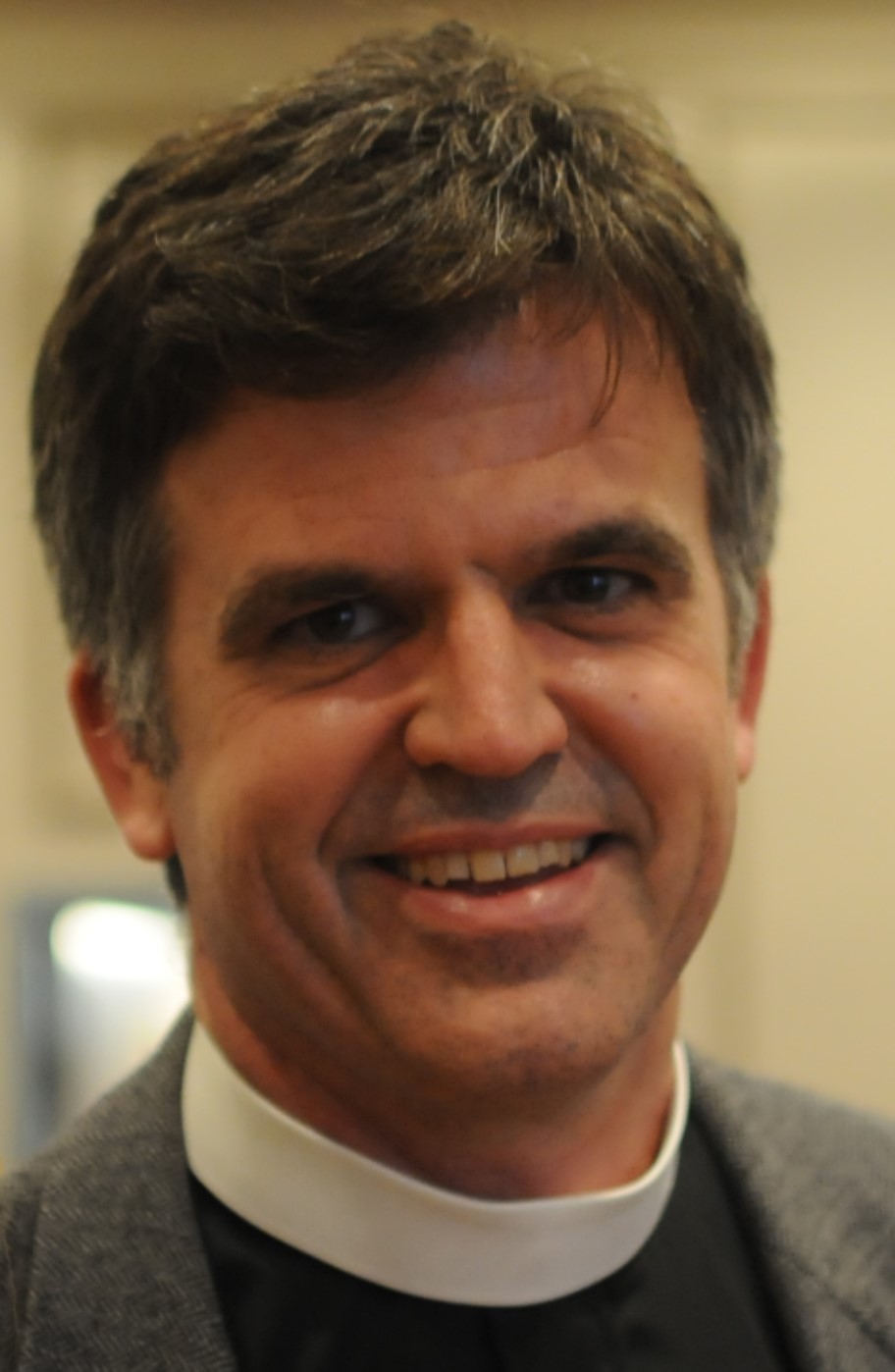Some of you may remember a Facebook post a few weeks ago. A group of people standing in a line along a low barrier wall on a hill overlooking a town and the blue sea, with no snow to be seen anywhere. Looks like a couple of ministers of the Presbyterian brand and several others waving at the person taking the picture from a little higher up the hill. They’re all smiling and looking like they are very happy with themselves and the state of the world. Like this is the way things should be and that they’re in no rush to move away and off to their next venture. In fact, a few of those people are here today having returned from their trip to Trinidad which included a very happy visit to San Fernando Hill rising above the city of San Fernando on the south west coast of the island. When you look at the picture you can almost hear them singing the old Carpenters’ favourite, “I’m on the top of the world lookin’ down on creation and the only explanation I can find is the love that I’ve found ever since you’ve been around, you’re what’s put me on the top of the world”.
It was a high point among many others on our trip to Trinidad at the invitation of Marabela Church to participate in the celebrations of the 150th anniversary of the founding of the Presbyterian Church of Trinidad and Tobago through the work of Canadian missionaries John and Sarah Morton. We were being shown around the island by our Trini friends who tried their best to have us see just about everything there was to see in the space of ten days. San Fernando Hill was one of those important spots. There is something about going up a mountain or a hill and gazing out over the scenery below that gives you a different perspective on the world and on your life. Things that down below seem to be so large and sometimes difficult and indeed sometimes insurmountable can be seen in a different way. Put in their place. We get taken out of the details of our lives and catch a glimpse of the bigger picture. We want this from time to time. We need this. I am sure if any of you go through your photos from a trip you have taken, you’ll likely come across one or two that show the view from when you went up a hill or a mountain or even a tall building or from the plane, “lookin’ down on creation”. Unless you are afraid of heights, it is usually an essential part of a journey.
It is what we encounter in our reading from Mark’s gospel today. The story that is usually known as the “Transfiguration”. After travelling around Galilee and the surrounding territory, teaching, healing, attracting huge crowds and getting into trouble with the local religious authorities, Jesus and three of his disciples take a break and they go up a mountain. They needed to get away. To get some perspective on things especially since Jesus had begun talking in a way that had begun to make his disciples nervous and even frightened. He had begun talking about the need for his own death and the need for his disciples to take up their own crosses and to follow him. This was not what they had expected and in fact it seems they were almost refusing to hear this part of the story. Peter, who had just made his bold confession that Jesus was the Christ turns around and says that there is no way that Jesus is going to die. In his mind, if Jesus is the Messiah, then there can only be triumph and glory. He wanted nothing to do with this talk of suffering and death. The campaign was building. Victory was at hand . . . “Get you behind me Satan” is what Jesus says. You need to look more deeply into what it means for me to be the Christ and you need to look more deeply into what it means for you to be my disciple.
So Jesus takes Peter and James and John and goes up a mountain. It is important to catch a glimpse of the big picture. Up there above the press of the crowds and the cries for healing and the questions posed to trick and incriminate them. To understand more clearly what their lives and their mission was all about. And according to the story they are not disappointed. They had their mountaintop experience. Jesus, their teacher, their companion, their friend, suddenly changes before their eyes as his clothes become dazzling white. And he is joined by two other figures, Moses and Elijah – two figures who were central in the stories about the end of time that were circulating at that time. Clearly Jesus was an important person. Peter once again decides he knows it all and is going to sort this all out by building little booths for each of the three to preserve the moment. Like taking a picture so you never forget the experience. But as quickly as he suggests it, a cloud comes over the mountain and a voice says, “‘This is my Son, the Beloved; listen to him!’. And then it is over. The cloud disappears. The voice is gone. Moses and Elijah are gone. It is Jesus and the three disciples standing on the mountaintop.
All of our mountaintop experiences end. Our glimpses of the bigger picture, our moments of revelation, our moments when we are certain that the Divine is speaking to us with a clarity we could never have imagined. The times when those we have known all our lives say something or reflect something that brings a whole new perspective go back to being the same people we have always known. We turn our backs on the mountaintop and start walking back down. Or we get back in the van on San Fernando Hill and follow the winding road back down into the town. We can’t stay on the mountaintop. We cannot freeze that moment in time and imagine that that is the way things are – no matter how much we wish it to be so. The revelations we receive, the new perspectives we gain, the exhilaration we feel have to travel with us back down the mountain.
Back down at the bottom of the mountain, things are different. We have to confront those things that from the mountaintop seemed miniscule but which once again loom large in our lives. The people who we can’t get along with no matter how hard we try. The patterns and routines that never seem to change. The fears and anxieties that haunt our lives. At the bottom of San Fernando Hill was a lovely community but one which had become obsessed with personal security because of the rising tide of violence in the country. No matter how many times you look at the lovely picture from the mountain top nothing changes when you step outside your gate and into the street. Jesus and his disciples were going back down the mountain to continue their journey toward Jerusalem and all that awaited them there. The bright and shining raiment, the powerful voice from heaven, the sense of awe and majesty had to accompany them into the growing conflict and the impossible demands of those they encountered.
No doubt they left the mountain reluctantly but with renewed strength and purpose. The voice had told them to listen to Jesus. In one of the commentaries I read on this passage there was a wonderful quote from Igor Stravinsky who said, “To listen is an effort, and just to hear is no merit. A duck hears also.” Now Stravinsky was talking about music but it is equally apt when thinking about things of faith. We can hear many things. But what does it mean to listen? On the mountaintop those early disciples of Jesus were told not only to hear but to listen. They had resisted what they were being told about the way of Jesus, about the way of the cross. They heard it, for sure. But did they listen? Did it really make it into their consciousness that this was the truth about the one they called the Messiah and about what it meant to follow him? In the moment of transfiguration on the mountaintop, in the moment of dazzling clothes and booming voice, they are told to listen. When Jesus will speak again about his suffering and death, and about taking up their cross, perhaps they will listen differently and understand more fully. Perhaps.
Sometimes we forget the mountaintop very quickly when we get back down to the bottom. Maybe it was just a nice diversion. A kind of illusion that takes us out of reality for a brief period but nothing that is really going to change anything when we get back into real life. God may be there on the mountaintop but where is God in the midst of the mess we encounter day by day in our homes and our streets and our places of work and study? No more brilliant white clothing. No more booming voice. Just life in all its complexity and all its challenge and all its drudgery. Time to put the pictures in the album and put them on the shelf or store them in the computer. Time to get back to normal.
But that’s exactly when we need to listen. That’s when we need to bring to mind the absolute ecstasy of the mountaintop to inform our living in order that we can hear, and more importantly listen. We need both the mountaintop and the life at the bottom. After our encounter on the mountaintop, nothing is as it once seemed. We have new eyes, new ears, a new way of understanding. It is no longer just our little world, we are part of something bigger. We have seen the light and have heard the voice and we can know that there is a larger call on our lives. What Jesus called taking up the cross.
This week we begin our Lenten journey. For six weeks we will be in a very particular way plunged into the sorrow and suffering of the gospel story and of the life of the world. A time of reflection and repentance. A time of turning our eyes toward Jerusalem. To watch and to listen for what it is we are called to do and be. We need to remember this strange story of the Transfiguration as we journey. It will help us on our journey. But we need to journey. Away from the mountain. Toward Jerusalem. To our own encounter with all that opposes God’s love and justice in this world. We can remember that feeling of what is right and so we can know when things are not right. Even when we reach another hill where the power of death and destruction seem to have won the day, we can remember that there is a power greater than all that that we can know in our lives.
Last evening we finished the Mardi Gras concert with two songs. We did not sing, “I’m on the top of the world”. We did sing a boisterous version of “Oh when the saints go marching in” with the band marching around the sanctuary followed by feather festooned partiers dancing and clapping and even Presbyterians getting to their feet and joining in. We thought that was the end and we were ready to clap and cheer and go home after a great night. But before we could leave, the band struck up a quite solemn version of “Abide with me”. Some sat. Some stood quietly. The mood changed. We had come off the mountaintop. We were on the journey but we needed the God of the mountaintop to travel with us. It was time. Thanks be to God.






